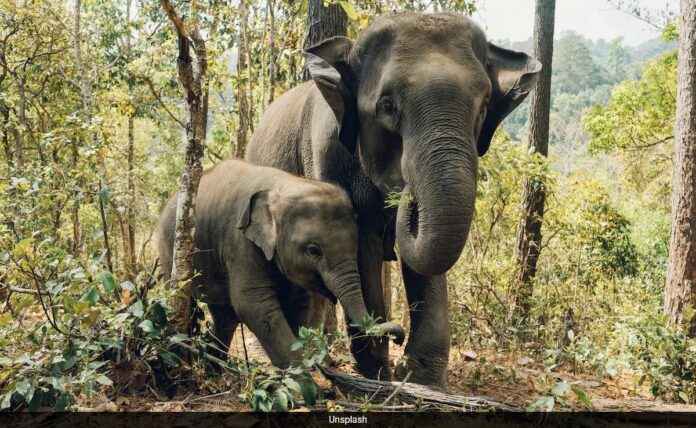The panel has been asked to submit its report in 10 days. (File)
Bhopal:
Samples collected in connection with the death of 10 elephants in three days this week in Madhya Pradesh’s Bandhavgarh Tiger Reserve are being sent to the ICAR-Indian Veterinary Research Institute in Uttar Pradesh and the forensic laboratory in Sagar, an official said on Friday.
On Tuesday, four wild elephants were found dead in Sankhani and Bakeli under the Khitoli range of the reserve, while four died on Wednesday and two on Thursday.
“We are sending all the samples we have collected from the field as well as organic, like viscera, liver, kidney etc to the IVRI in Izatnagar in UP’s Bareli as well as the MP forensic laboratory in Sagar,” Additional Principal Chief Conservator of Forest (Wildlife) L Krishnamoorthy told PTI from BTR over phone.
He heads the five-member committee appointed by the Mohan Yadav government to probe the death of the tuskers in Bandhavgarh, which is spread across Umaria and Katni districts in eastern Madhya Pradesh.
Mr Krishnamoorthy had earlier said samples (viscera) of the elephants were sent to the Jabalpur-based School of Wildlife Forensic and Health (SWFH) to find out toxins, if any, and the cause of death.
He was responding to a query on whether the elephants had consumed poisonous pesticides sprayed in the field.
“Only after the reports come in can we arrive at a conclusion on the cause of death. Post mortem reports are suspecting it could be due to Kodo millets,” Madhya Pradesh Principal Chief Conservator of Forest (PCCF-Wildlife) VKN Ambade told PTI.
A senior veterinarian connected to the probe cited staffers at the reserve and said the elephants fell to the ground and shivered before dying.
A ground duty officer said the forest department has identified six farmers from whose field the jumbos ate kodo millets, adding reports will clarify if any pesticide was mixed or sprayed on the crop.
Meanwhile, a five-member team of Delhi-based Wildlife Crime Control Bureau continued their probe into the deaths on the second day on Friday.
Officials said the Nagpur-based regional officer of the National Tiger Conservation Authority, assistant inspector general of forests Nandkishore Kale, continued his investigations at BTR.
“The state tiger strike force also visited nearby agricultural lands, paddy fields, water bodies etc in connection with the kodo millets. All the dead elephants were part of a herd of 13. One of the dead elephants was male. The remaining three in the herd are healthy. They are being monitored,” another official said.
Krishnamoorthy earlier said veterinarians had suggested chances of (presence of ) mycotoxins associated with kodo millets.
Mycotoxins generate cyclopiazonic acid that causes poisoning in kodo millets, he said.
The forest department’s wildlife veterinarians are consulting experts of Indian Veterinary Research Institute (IVRI) Bareilly, Wildlife Institute of India (WII) Dehradun, State Forensic Science Laboratory, Sagar, and Centre for Cellular and Molecular Biology (CCMB) Hyderabad to get details about the mycotoxins, he said.
The SIT and special task force are investigating the case from all angles, the official added.
The Krishnamoorthy-led panel has been asked to submit its report in 10 days.
Some wildlife experts said it may be the first instance in the country when 10 elephants have died in three days.
(Except for the headline, this story has not been edited by The Hindkesharistaff and is published from a syndicated feed.)




